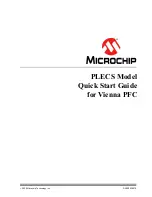
Design 3024S Actuator
Instruction Manual
Form 5421
June 1999
5
For a Type 3024S Air-To-Open & Air-To-Close
actuators:
5. Cycle the actuator several times to check for
proper operation.
6. Adjust the travel indicator scale (key 26) up or
down to correspond with the travel indicator.
Travel Adjustments
Although making travel adjustments should not be
necessary if previous section on Actuator Mounting
has been followed, use the following procedure
when the actuator travel is different from that
stamped on the actuator nameplate (figure 2).
When adjusting the travel of a push-down-to-close
valve air-to-open actuator combination, slightly
pressurise the actuator. This moves the valve plug
off the seat, reducing the chance of damaging the
valve plug or seat during adjustment.
1. Back off the stem hex nut (key 54/52) from the
valve stem connector, and slightly loosen both/all 4
cap screws (key 55/56) from the connectors.
2. Screw the connector (key 50) clockwise (to
lengthen travel) or counter-clockwise (to shorten
travel).
3. Tighten the stem connector cap screw (key
55/56).
4. Cycle the actuator to check for the specified
travel. If the travel is not equal to the specified travel,
adjust and check it until it is correct. Tighten the
stem hex nut (key 54/52) against the stem
connector.
Maintenance
Actuator parts are subject to normal wear and must
be inspected and replaced as necessary. The
frequency of inspection and replacement depends
upon the severity of the service conditions. Due to
the care Fisher takes in meeting manufacturing
requirements (heat treating, dimensional tolerances,
etc.), use only replacement parts manufactured or
furnished by Fisher.
This section describes how the actuator can be
completely disassembled and assembled. When
inspection or repairs are required, disassemble only
those parts necessary to accomplish the job; then
start the assembly at the appropriate step.
Key numbers refer to figure 6 for a Size 1.21/1.31
Air-To-Close actuator, to figure 7 for a 1.21/1.31
Air-To-Open actuator, figure 9 for a Size 1.41
Air-To-Close actuator, to figure 10 for a 1.41
Air-To-Open actuator.
Disassembly
WARNING
Avoid personal injury or damage to
property from sudden release of
pressure, uncontrolled process fluid,
or precompressed spring force. Before
starting disassembly:
D
Isolate the valve from the
process,
D
Release process pressure,
D
Vent all internal pressure from the
actuator,
D
Release all spring preloading
force,
D
Use lock-out procedures to be
sure that the above measures stay in
effect while you work on the
equipment.
1. For complete disassembly, the positioner and all
accessories (if attached) must be removed from the
actuator. Follow the appropriate removal procedures
in the instruction manuals supplied with the
positioner and accessories.
2. Bypass the control valve. Reduce the loading
pressure to atmospheric, and for a bottom-loaded
Type 3024S Air-To-Open actuator, remove the
tubing or piping from the connection in the lower
diaphragm casing (key 1).
For a top-loaded Type 3024S Air-To-Close actuator,
remove the piping or tubing from the connection in
the upper diaphragm casing (key 16).
3. Slightly loosen all diaphragm casing cap screws
(key 19 and 21). Remove the plastic hose (key 22).
Unscrew the short and long diaphragm casing cap
screws and nuts (key 19, 20 and 21) alternately, until
only the long casing cap screws (key 21) remain
engaged. Then allow the remaining spring
compression to be slowly and evenly released by
alternately unscrewing the long casing cap screws.






































